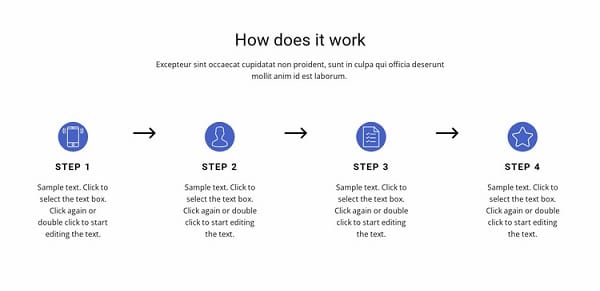Our planet runs on emails. Or, at least, the world of business does. Email communication has been a central force that connects clients, businesses, and employees since its invention. As a direct form of delivering a message from one person to another, email is one of the most effective ways of linking employees and creating a discernable history of communication.
Yet, considering people tend to spend at least 11 hours reading and answering emails each week, this form of communication is anything but efficient in most workplaces. With the rise of instant communication tools, email has rapidly become seen as a more formal stage where employees share details for projects, but not day-to-day communication.
In this article, we’ll demonstrate how employees and businesses can reconfigure their email accounts and communication to return email to the pinnacle of internal comms. We’ll dive into core configurations, structures, and strategies for success.
Let’s dive right in.
Steps To Streamlining Email Communication
Across the average workplace, despite the availability of other communication tools, emails are still the leading format that employees prefer. When surveyed, 74% of adults listed email as their preferred method of communication, this winning out over phones, instant messaging, and other workplace possibilities.
By streamlining email, you’re not only unlocking a truly potential communication tool, but you’re giving employees effective methods of using their favorite technologies. It’s a win-win for your employees and for businesses looking to maximize productivity.
Depending on your current internal practices and workplace culture, streamlining your email communication could be a walk in the park or a complete uphill battle. Whichever camp you sit in, here are four core steps to transform the way you use email.
Step 1: Categorization Matters
Beyond just a communication tool, one of the leading advantages of using email is that it provides a thorough and organized space to archive previous ideas and conversations. Especially in the world of business, where you may have to refer back to previous projects, find specific wording, and engage with previous conversations, the ability to look backward so easily is extremely useful.
However, nothing is worse than scrolling through pages and pages of emails and not being able to find what you’re looking for. This exact reason is why the first step to streamlining internal communications is to ensure employees all have a comprehensive folder system set up in their email. You can construct folders for:
- Specific projects
- Internal/external conversations
- Certain goals
- Conversations from a specific team or person
The degree to which employees categorize their emails is up to them. However, the important element is that they create a drag-and-drop system that they can move emails into when they arrive. Some employees even have a priority system within their folders, allowing them to hit high-priority emails first when they sit down to respond.
With a range of different folders, your employees will be ready for any email that arrives in their inboxes.
Step 2: Save Time With Signatures

Signing off from emails, while only taking around 10-30 seconds, will take up a significant amount of time across a working month. If we consider that the average employee sends around 40 emails each day, you already have as much as 20 minutes of active time just typing out a closing statement and adding personal details.
While 20 minutes may not seem like much, when compounded over several weeks and months, this inefficiency is something that businesses should attempt to root out. One of the most effective ways of streamlining this final part of internal business correspondence is by using an email signature.
Employees can create a number of different signatures, attaching the right one depending on whether the email is internal or external to their organization. Over time, this will allow them to rapidly send emails without having to sign off, while also adding more information. What’s more, by using an email signature management tool, employees can automatically attach and change signatures based on the recipients of their emails.
Beyond just saving time, the ability to add more information in an email signature will also help to streamline external comms.
Step 3: Ditch Formality
When working in a team, one aspect of business formality that people should not need to put up with every day is formality in emails. After sending the first-ever email to your employee, your business should allow people to ditch the additional formalities. Having to type out the kindest regards and warmest greetings loses all value to the conversation extremely quickly.
Your business should make it a precedent that when communicating internally, emails shouldn’t have to follow the same standard of formality that you would expect with external comms. Allow employees to send emails without greetings or farewells, getting to the core purpose of their message from the first sentence.
Once again, this will drastically save people time when it comes to sending emails to their coworkers. Most of the time, the level of formality that some businesses expect is directly in contrast with the familiarity that coworkers have with each other. Lean into these interpersonal relationships and award from needless corporate formality.
With this step, you’ll save your employees time and streamline all forms of internal communication.
Step 4: Provide Templates

One of the final methods you can use to create a more effective internal email communications system is to provide your employees with a range of templates based on what they need to discuss. Most of the time, the emails that people are going to send out will be similar to ones they’ve sent before.
For example, every time your manager invites people to a meeting or shares a monthly report, the email will likely be very similar. Instead of wasting time by typing everything out again, make sure that your employees have access to a range of templates that they can use. This strategy will shave off precious minutes and ensure communication flows freely in your organization.
Final Thoughts
Email communication is the heart of business comms. Both externally and internally, thousands of emails come and go from companies around the world every single day. Yet, without taking full advantage of this phenomenal technology, many businesses actually harm their internal communications, slowing down employee communication and frustrating project progress.
By creating a constructive environment where employees have full access to all of the additional technologies and strategies they need to make communication as effective as possible, you can streamline internal comms and boost productivity. While small changes won’t have an overnight effect, over days and months, you’ll rapidly see just how transformative these changes to email comms can be
Read also:
- Tips on How to Choose the Right Email Marketing Tools
- Prepare for 2023 With These Essential Digital Marketing Apps
- 4 Core Things A Digital Marketing Agency Can Do For Your Business
- Internet Marketing Strategies to Make Your Business Stand Out in 2022
- An Effective Guide For Reducing Email Spam and Protecting Your Digital Privacy
- Navigating the Digital Boardroom – Key Considerations for Successful Implementation

